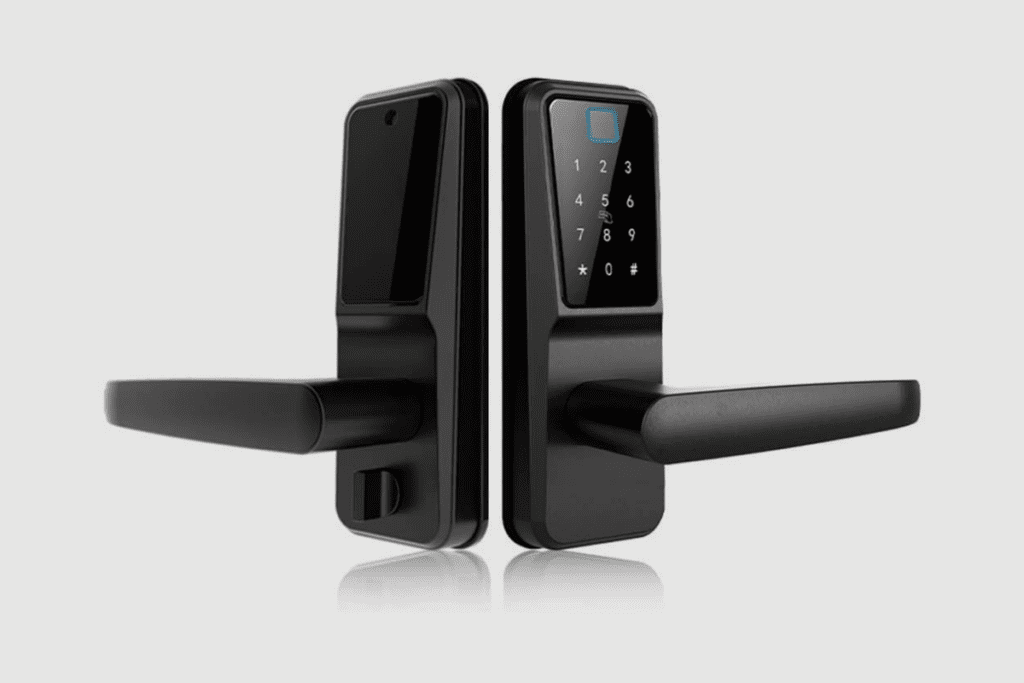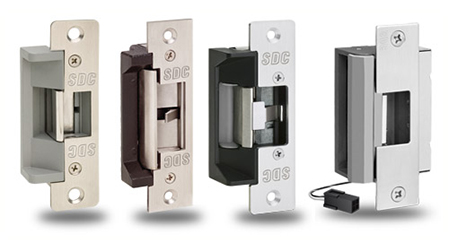Electronic door locks have become an essential part of modern security systems, both for homes and businesses. They blend high-tech solutions with ease of use, offering a new level of convenience and safety. Unlike traditional locks, electronic versions provide stronger protection against unauthorized access, making them vital in today’s world where security concerns are ever-increasing. Their ability to integrate with smart home systems adds another layer of functionality, allowing for remote monitoring and control.
A Quick History of Electronic Door Locks
Electronic door locks, an innovative leap in security technology, have a fascinating history. They first emerged in the 1970s, marking a significant shift from traditional mechanical locks. Initially, these locks were simple keypad systems, allowing entry through a numeric code. Over time, advancements in technology have greatly enhanced their features. Now, we see biometric systems, like fingerprint and retina scans, and smart locks that connect to home automation systems. This evolution reflects our growing need for higher security and convenience. Electronic door locks have not only made our homes and workplaces more secure but also brought a touch of modern sophistication to our daily lives.

How do electronic door locks work?
Electronic door locks have transformed the way we secure our homes and offices, offering a blend of convenience and advanced security. Let’s see how these ingenious devices work, step by step.
Step 1: Understanding the Basic Components
Firstly, it’s crucial to understand the key components of an electronic door lock. These usually include a keypad or touch screen, a locking mechanism, and often a connection to a smart home system. Some models also feature biometric sensors for fingerprint recognition.
Step 2: The User Interface
The journey begins with the user interface, typically a keypad or touch screen. This is where you’ll enter a PIN code, use a swipe card, or even your fingerprint, depending on the lock’s features. Modern locks also offer smartphone connectivity, allowing you to unlock your door with an app.
Step 3: Signal Processing
Once you input the code or use a biometric scan, the lock’s system processes this input. It compares the entered code or biometric data with the pre-set authorized codes or data stored in its memory.
Step 4: Unlocking Mechanism Activation
If the input matches the stored authorization data, the lock activates the unlocking mechanism. This is typically a motor or solenoid inside the lock that retracts the locking bolt or latch.
Step 5: Door Opens
With the locking mechanism retracted, the door can now be opened. This process happens in seconds, providing quick and easy access for authorized users.
Step 6: Locking the Door
To lock the door, you can either press a button on the inside, or use the keypad or app, or, in some models, the door will automatically lock after it closes.
Step 7: Power Source and Backup
Electronic locks are powered by batteries or a direct power source. Most models have a low battery indicator and offer a key override or external battery backup for emergencies.
Step 8: Smart Home Integration
A lot of electronic locks are compatible with smart home automation. This allows for remote monitoring and control, including locking or unlocking your door from anywhere, receiving access alerts, and even connecting with other smart devices like cameras or lights.
Step 9: Advanced Features
Advanced models offer additional features like temporary access codes, which are perfect for guests or service personnel, and audit trails, which keep a log of all lock/unlock events.
Step 10: Regular Maintenance
To ensure your electronic lock functions properly, regular maintenance is key. This includes checking batteries, ensuring the keypad or biometric scanner is clean, and updating the software for smart locks.
Step 11: Upgrading and Customization
As technology advances, you can upgrade your electronic lock with new features or replace it with a more advanced model, ensuring your security system stays up-to-date.
Electronic door locks work through a series of user interactions, signal processing, and mechanical actions, all designed to provide secure and convenient access. They have become an integral part of modern home security, blending technology with everyday functionality.
Types of electronic door locks
Electronic door locks come in various types, each offering unique features and levels of security. Let’s look at a few of the typical kinds you may run into.
1. Keypad Locks
Keypad locks are quite popular. They require a numeric code for entry, making keys unnecessary. You can often create multiple codes, ideal for letting family or friends in when needed.
2. Smart Locks
Smart locks represent the latest in lock technology. They connect to your home Wi-Fi or Bluetooth, allowing control via a smartphone app. These locks often feature remote unlocking, access notifications, and integration with other smart home devices.
3. Biometric Locks
Biometric locks use personal features like fingerprints to unlock. They offer high security as fingerprints are unique to each person. These locks are perfect for those who prefer not to remember codes or carry keys.
4. Key Card Locks
Often found in hotels, key card locks require a card swipe or tap to open. These are user-friendly and allow for easy access management, especially in commercial settings.
5. Radio Frequency Identification (RFID) Locks
RFID locks use a key fob or card that communicates with the lock via radio waves. They’re convenient, as you only need to be near to unlock the door.

The advantages of electronic door lock
Electronic door locks are a significant advancement in home and business security, offering numerous benefits. Let’s analyze each of these benefits in further depth.
Enhanced Security
Electronic door locks provide a higher level of security compared to traditional locks. Their advanced mechanisms make them harder to pick or bypass, ensuring your property stays safe.
Keyless Convenience
With electronic locks, the hassle of carrying keys is a thing of the past. You can unlock your door with codes, smartphones, or even biometrics, offering a keyless, hassle-free experience.
Customizable Access
These locks allow you to set and share different access codes. This is particularly useful for granting temporary access to guests or service providers without compromising your main code.
Smart Home Integration
Many electronic locks can integrate with smart home systems. This allows for remote control of your lock, real-time access notifications, and even setting up automated home entry scenarios.
Remote Access and Monitoring
With an internet connection, you can monitor and control your electronic lock from anywhere. This feature is perfect for letting in guests when you’re not home or checking if you remembered to lock the door.
Easy Installation and Operation
Most electronic locks are easy to install and operate. They fit standard door setups and come with user-friendly interfaces, making the transition from traditional locks smooth.
Audit Trails
High-end models keep logs of every lock and unlock action. This is valuable for security monitoring, especially in business settings where tracking access is crucial.
Durability and Reliability
Electronic locks are generally more durable and reliable than traditional locks. They are built to withstand various weather conditions and are less prone to wear and tear.
Temporary Access Features
You can create temporary codes for guests or workers. This feature enhances security as you don’t need to provide your main access code.
Low Battery Indicators and Backup
Most electronic locks have low battery indicators, and some offer emergency power options like a key override or external battery connection.
Electronic door locks offer a blend of enhanced security, convenience, and control. They represent a smart investment for anyone looking to upgrade their home or business security system. With their range of features and benefits, electronic locks are not just about locking doors; they’re about peace of mind in an increasingly connected world.
